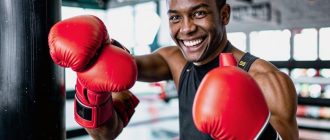In the heart of China, among the picturesque mountains, lurks the ancient Shaolin Monastery – the cradle of martial arts. In this place spirituality and physical strength found harmony and learned to coexist together. Every day in Shaolin kung-fu masters cognize themselves, the world and approach the inner balance. This is facilitated by a certain way of life. Together with the instructor Evgeny Vetchinin, we find out what habits of monks should be taken into account in order to find inner harmony and improve physical fitness.
Kung Fu instructor in Moscow, 3rd Duan Wushu, personal disciple of Master Shi Yanbin.
“Shaolin monks are people who have decided to devote themselves to Buddha, to the study of martial arts, Kung Fu, Chan Buddhism. To choose this path is to rely on one’s faith deep down. The life of a monk consists of strict rules, a clear daily schedule and training. This kind of lifestyle helps to clear the mind, promotes longevity and nurtures strength of body and mind.”
In Shaolin, there are monks who are vensen and usen. The former are engaged in spiritual practices, reading sutras and conducting services. The latter also devote themselves to meditation and Buddha’s teachings, but spend most of their time practicing kung fu.
Life of Buddhist monks
Shaolin Monastery is known as the birthplace of martial arts. However, the real tradition is Chan meditation. All martial styles passed down by masters to their descendants arose in the process of perfecting this practice. It is an integral part of the daily life of the monk and members of the monastic community.
It is through Chan meditation that one can enter the state of “unshaken mind” in kung fu. If the student has not achieved equanimity of mind, the training is considered futile. This practice is also used for other forms of cultural expression. For example, in wushu, medicine, calligraphy, architecture, sculpture.
Shaolin Monastery also has its own routines for different seasons of the year. In winter, Buddhist monks spend more time practicing Chan chi and sitting meditation. In summer, they spend more time studying and interpreting sutras.
Chan chi is a special form of meditation that requires certain skills, health and stamina. The participant must sit cross-legged for a long time and follow the rules. No napping, scratching, head spinning, or muttering is allowed in the Meditation Hall. Violators may receive a caning on the back from the caretaker and incense keeper.
Through Chan chi, Buddhist monks come to significantly transform their innate qualities and states of mind. One of the practices is to contemplate the same object for 49 days. During this time, it is forbidden to leave the Meditation Hall. It is allowed to take a break only for a time until some incense is burned.
The life of a monk is delineated by rules. Foremost among them are five vows: not to take life, not to take the life of others, not to commit adultery, not to lie and to abstain from alcohol.
There is also a set of rules known as the Vinaya. It contains detailed instructions on how Buddhist monks should conduct their daily lives, from choosing their clothing to performing religious rituals. They help to maintain discipline, purity of mind, body and remain dedicated to their spiritual path.
Daily routine
The lives of Shaolin monks follow a very strict daily routine. The rules were established during the Tang Dynasty by Master Bai Zhang and are the foundation of Chan Buddhism.
Late sleepers will have a hard time here. The day begins at 5 am with the ringing of the bell. Within half an hour, the monks are already busy with various activities. Some meditate, others read sutras, others go to the mountain to perform daily kung fu exercises. At 7 a.m., everyone gathers for breakfast in the Guo-tan eating hall. Lunch starts at 11:30am and dinner starts at 5:30pm. Vegetarianism is the monks’ staple diet. It reflects the key principle of Buddhism – ahimsa or the principle of non-violence.
By refusing to eat meat and fish, monks show respect for all living beings. The diet includes porridge, noodles, rice, a variety of vegetables and cereals. Spices are used in moderation. Meals are eaten strictly at the same time. During meals, monks avoid both overeating and malnutrition. Silence is also obligatory in the hall. This helps to maintain physical, spiritual health and live to be a hundred years old.
After lunch, some monks rest and their duties are performed by others. This continues until the reading at 4:30 pm. The evening is meant for retreat. Monks may return to their study, practice or go to rest. At 21, the signal is sounded that everyone should go to bed.

The Art of Shaolin
The Art of Shaolin originated over a thousand years ago, in the first half of the 6th century. It was based on ancient Chinese fighting techniques and the teachings of the Indian monk Bodhidharma (Damo), who combined physical combat with spiritual practices.
Shaolin Kung Fu is a huge body of described techniques. It includes hundreds of combat complexes. Each of them, whether classical fist fighting or weapon fighting, reflects a deep understanding of body physics and mental focus.
The art of Shaolin is not just a system of techniques, but a path of self-discovery and development. Training requires physical strength and mental discipline. Kung Fu has had a significant influence on modern martial arts. Many elements have been adapted and integrated into other styles.
The exercises of Shaolin monks are characterized by flexibility, strength, speed and precision. Among the numerous techniques, Qinna techniques (eversion of joints), methods of breaking bones, and striking vital acupuncture points stand out. All of them are naturally organized into a single extensive and orderly system of knowledge. The description of techniques is grouped by level of difficulty and other criteria.
Shaolin Kung Fu cannot be compared with any other school or style. Its unique feature is the unity of Chan (meditation) and Wu (martial arts). The spiritual component of the art is as important as the physical. Breathing exercises play a key role in strengthening the mind and spirit. They help achieve the harmony and focus needed to master the skill.

Training of Buddhist monks
Shaolin monks are characterized by incredible strength and endurance. To this they go for many years, diligently practicing three times for 2-3 hours each day. The exercises are intense and range from traditional martial techniques to breathing practices.
Before beginning the training, monks meditate to calm the spirit, focus the mind and prepare the body. It is believed that it is meditation that will achieve the inner calmness for successful kung fu.
Physical training begins with a warm-up. Buddhist monks perform stretching exercises to increase flexibility and prevent injury. The focus is then on muscle strengthening, endurance, and balance.
The bulk of the training focuses on learning and practicing martial arts. Monks master various styles of kung fu: fist techniques, wrestling techniques, working with traditional weapons (sticks, swords, spears). Physical exercises develop agility, strength, precision and high concentration.
Jibengong includes a number of training techniques aimed at strengthening all parts of the body. Students work with weights, perform kicks on hard objects and use special breathing techniques. This is important for strengthening bones, joints, and resistance to exercise and pain.
Iron Qigong is a set of exercises aimed at cultivating and controlling internal energy (Qi). Practices include specific breathing techniques, meditation, and physical exercises. They help monks achieve a high level of physical and mental control.
Qinna is also considered an important part of training. Grappling and control techniques allow you to influence joints, perform point strikes and immobilize your opponent. One must have a deep understanding of human anatomy and extensive experience in close combat to master this practice.
Sanda is fighting under controlled conditions. It is a test of mental endurance, fortitude and the ability to maintain composure in extreme conditions. In these sparring sessions, Shaolin monks face real and intense combat situations that require maximum concentration, stamina and skill. These are the ones you may have seen in popular martial arts movies.
Sparring sessions come in both hand-to-hand and weaponized forms. They allow students to improve physical skills, control emotions and stress in a real combat environment. The process is monitored by specially trained people. In case of serious threat to health and life, they have the right to intervene and interrupt the fight.
Monks pay great attention to technique, striving for perfection in every aspect of their practice. Several principles are important for proper practice. Regularity, gradual increase in exertion, a combination of physical and spiritual practices, concentration and discipline are the foundation of fruitful work and study of the Shaolin arts.






